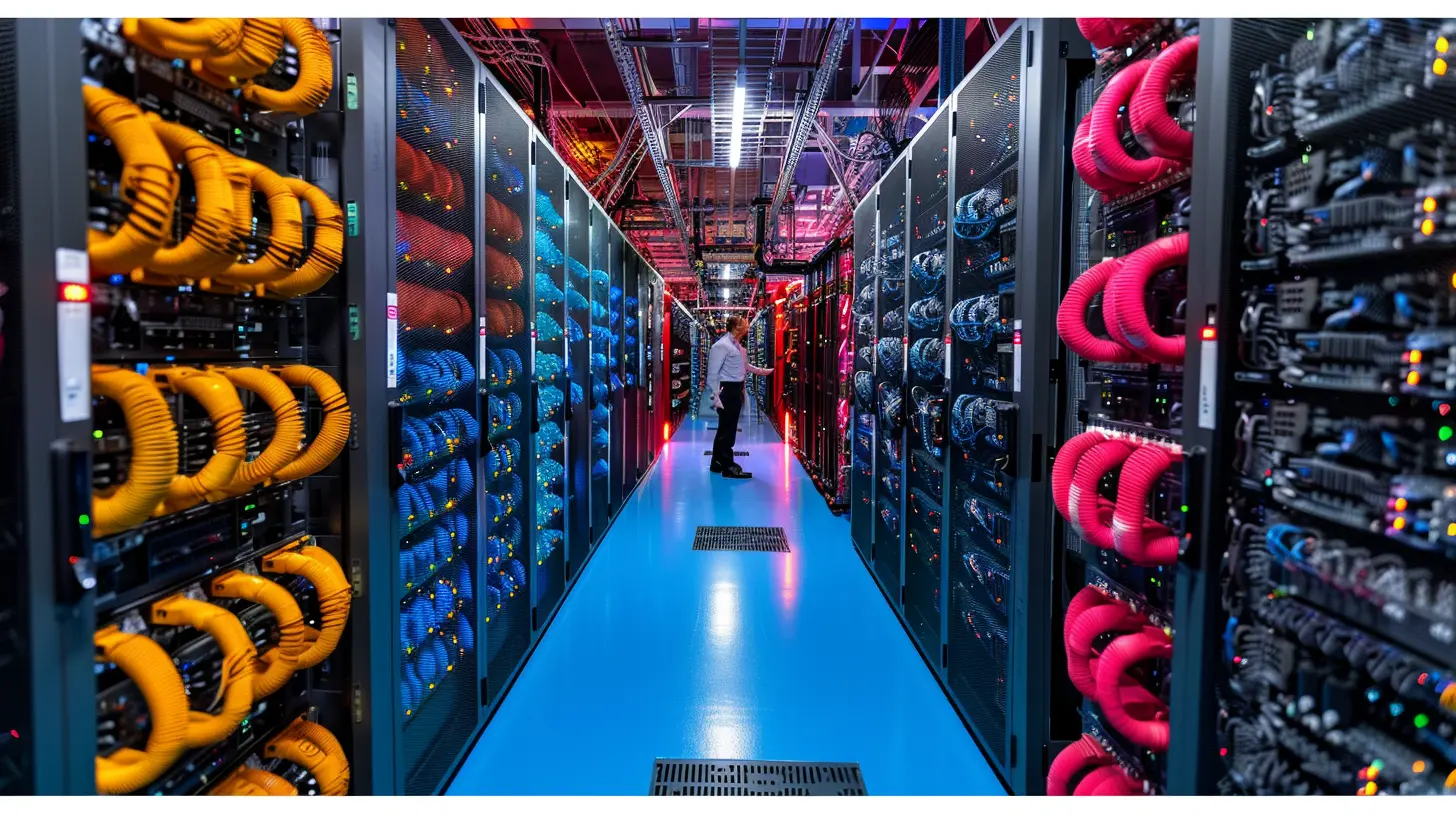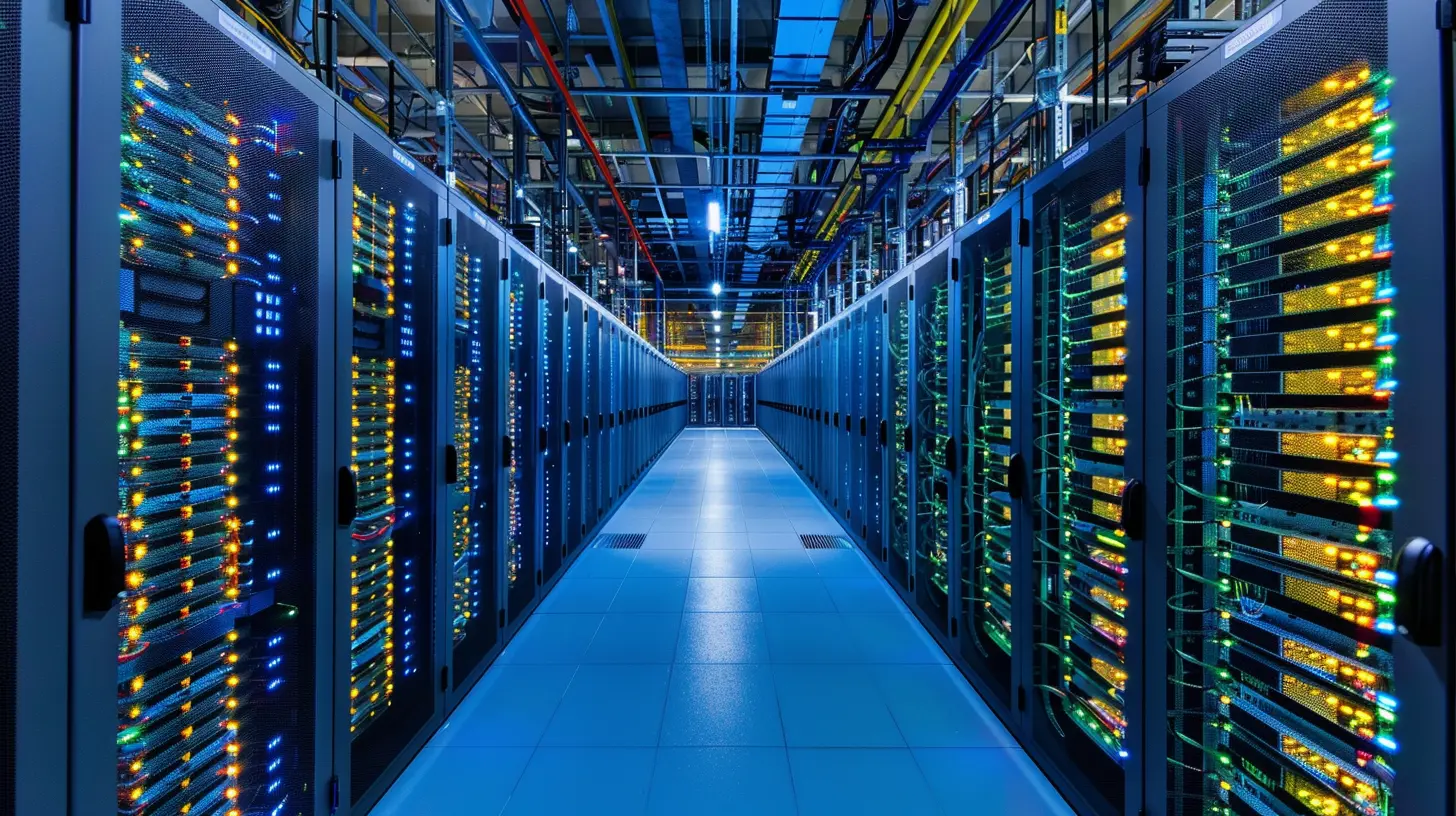AI-Powered Predictive Maintenance in Data Centers
8 May 2025
Introduction
Ever had that sinking feeling when your laptop suddenly crashes in the middle of something important? Now, imagine that happening in a data center housing critical infrastructure for major businesses, cloud services, and financial transactions. Yeah, that’s a nightmare.
Keeping data centers up and running smoothly is a top priority, and traditional maintenance methods just don’t cut it anymore. Enter AI-powered predictive maintenance—a game-changing approach that helps data centers avoid costly downtime, optimize efficiency, and stay ahead of potential failures.
So, how does it work? Why is it better than the old ways? And what does it mean for the future of data centers? Let’s break it down. 
The Evolution of Data Center Maintenance
Reactive vs. Preventive vs. Predictive Maintenance
Back in the day, data center maintenance was mostly reactive—something breaks, and you fix it. Simple, but incredibly risky and expensive. Imagine finding out your car has engine issues only when it refuses to start. Not ideal, right?Then came preventive maintenance, which involved regular check-ups and part replacements based on usage or time schedules. This was a step up, but still not foolproof. What if you replace a perfectly fine part just because the manual says so? Waste of resources.
Now, we’re in the era of predictive maintenance, where artificial intelligence (AI) steps in to analyze data, predict failures, and suggest maintenance exactly when it’s needed. It’s like having a car that tells you, “Hey, my brakes are wearing out, but you still have 500 miles before it’s urgent.” That’s smart maintenance. 
How AI-Powered Predictive Maintenance Works
AI-driven predictive maintenance isn’t magic—it’s just really smart tech at work. Here’s how it functions:1. Continuous Data Collection
Data centers generate tons of operational data every second. Sensors and monitoring tools collect information on temperature, power consumption, cooling efficiency, hardware performance, and more.2. AI-Driven Analysis & Pattern Recognition
Machine learning algorithms analyze all this data to detect patterns. They compare real-time data with historical trends and industry benchmarks to identify early warning signs of potential failures.3. Predictive Alerts & Actionable Insights
Instead of waiting for something to break, AI predicts when a failure is likely to occur and alerts IT teams before disaster strikes.For example, AI might detect that a cooling fan is showing signs of wear, allowing technicians to replace it before it overheats and causes a serious issue.
4. Automated Maintenance & Optimization
Some advanced AI systems can even automate certain maintenance tasks. Think of it as self-healing technology—where minor issues are resolved automatically without human intervention.
The Benefits of AI-Powered Predictive Maintenance
Why is AI predictive maintenance such a game-changer in data centers? Let’s dive into the biggest advantages.1. Reduced Downtime & Failures
Data center outages can cost thousands of dollars per minute. Predictive maintenance minimizes unexpected failures, keeping everything running smoothly.2. Cost Savings
Replacing equipment only when needed eliminates unnecessary maintenance expenses and extends the lifespan of expensive hardware.3. Improved Energy Efficiency
AI-driven insights help optimize power consumption, cooling, and overall efficiency, reducing electricity costs and environmental impact.4. Enhanced Reliability & Uptime
With AI keeping a close watch, data centers become more reliable, ensuring seamless operations for businesses and cloud services.5. Smarter Resource Allocation
Instead of technicians spending time on routine check-ups, they can focus on critical issues that actually need human attention.
Real-World Use Cases
Google’s AI-Powered Cooling Optimization
Google uses AI developed by DeepMind to optimize cooling systems in its data centers. By predicting temperature changes and adjusting cooling settings in real time, they’ve cut energy usage by 40%. That’s a massive reduction in costs and environmental impact.IBM’s AI-Based Server Maintenance
IBM’s Watson AI analyzes server performance and predicts hardware failures before they happen. This has improved uptime and reduced maintenance costs for data centers worldwide.Alibaba’s Smart Data Centers
Alibaba Cloud leverages AI to automate maintenance, optimize workloads, and significantly reduce downtime, making their cloud services more reliable.Challenges & Limitations
Of course, AI-powered predictive maintenance isn’t perfect. Here are a few challenges:1. High Initial Costs
Implementing AI-driven maintenance requires investment in hardware, software, and training. Small data centers may find it costly upfront.2. Complex Implementation
Integrating AI into existing systems can be tricky. It requires skilled professionals who understand both data center operations and AI technology.3. Data Privacy & Security Risks
AI operates on vast amounts of data, and securing that data is critical. Any cybersecurity vulnerabilities could be exploited by hackers.4. Dependence on Accurate Data
AI is only as good as the data it analyzes. Inaccurate or incomplete data could lead to false predictions or missed failures.The Future of AI in Data Center Maintenance
AI is only going to get smarter and more efficient. Here’s what we can expect in the coming years:- More Automation: AI will take over more routine maintenance tasks, reducing the need for human intervention.
- Self-Healing Systems: Future AI models might not just predict failures but also automatically fix them.
- Better Energy Efficiency: AI-driven solutions will continue to make data centers more eco-friendly and cost-effective.
- Integration with IoT: AI and IoT (Internet of Things) will complement each other, allowing even deeper insights into predictive maintenance.
Final Thoughts
AI-powered predictive maintenance is revolutionizing the way data centers operate. By preventing unexpected failures, reducing downtime, and optimizing performance, AI is making modern data centers more reliable, efficient, and cost-effective.Sure, there are challenges, but the benefits far outweigh the drawbacks. As AI technology evolves, predictive maintenance will become smarter, faster, and more precise—leading to an era of ultra-efficient, self-sustaining data centers.
So, is your data center ready for the AI revolution? One thing’s for sure—waiting for things to break before fixing them is a strategy of the past. Predictive maintenance is the future.
all images in this post were generated using AI tools
Category:
Data CentersAuthor:

Reese McQuillan
Discussion
rate this article
6 comments
Kristina Rogers
AI-powered predictive maintenance in data centers represents a transformative shift in operational efficiency. By leveraging data analytics, we can foresee potential failures, reduce downtime, and optimize resource allocation. Embracing this technology not only enhances performance but also fosters sustainability, paving the way for smarter, more resilient infrastructures.
May 18, 2025 at 12:56 PM

Reese McQuillan
Thank you for your insightful comment! Indeed, AI-driven predictive maintenance is crucial for enhancing operational efficiency and sustainability in data centers.
Pilar Morales
AI-driven predictive maintenance in data centers not only optimizes operational efficiency but also redefines our understanding of proactive resilience in an increasingly digital world.
May 15, 2025 at 2:30 AM

Reese McQuillan
Thank you for your insightful comment! Indeed, AI-driven predictive maintenance is revolutionizing how we approach resilience and efficiency in data centers.
Cody Bowman
In a world where downtime can cost millions, AI's role in predictive maintenance unveils a hidden realm of data patterns. What secrets lie within our machines, waiting to be discovered? The future of data centers is being rewritten—are we ready?
May 13, 2025 at 7:00 PM

Reese McQuillan
Absolutely! AI-driven predictive maintenance can unlock invaluable insights, helping us anticipate issues before they arise and optimize operations. The potential benefits are immense, and readiness is key to harnessing this transformative technology.
Liam Potter
Fascinating insights on AI's role in predictive maintenance for data centers! How does the integration of machine learning algorithms enhance efficiency? I'm curious about the real-world impact on operational costs and downtime.
May 13, 2025 at 12:10 PM

Reese McQuillan
Thank you for your comment! Machine learning algorithms enhance efficiency by analyzing vast amounts of data to predict failures before they occur, which minimizes downtime and optimizes maintenance schedules. This proactive approach significantly reduces operational costs and improves overall reliability in data centers.
Farrah Gibson
Great insights on AI in predictive maintenance! Excited to see its impact on data centers!
May 10, 2025 at 11:56 AM

Reese McQuillan
Thank you! I'm glad you found the insights valuable. Exciting times ahead for AI in data centers!
Cruz McAleer
Predictive maintenance using AI is not just a trend; it’s a game-changer. Embrace this technology now or risk falling behind. Data centers need smart solutions, and AI delivers precision and efficiency like never before.
May 9, 2025 at 12:04 PM

Reese McQuillan
Thank you for your insightful comment! I wholeheartedly agree—embracing AI-driven predictive maintenance is vital for data centers to enhance efficiency and stay competitive.
MORE POSTS

How to Protect Your Personal Data in the Age of IoT

How Fintech is Facilitating Cashless Societies Across the Globe

How Blockchain Technology Is Enhancing Data Center Security

Wearable Tech Meets Laptops: Exploring Future Trends in Mobile Computing

The Best Laptops for Multitasking: Speed, Storage, and Stability